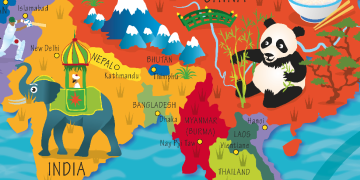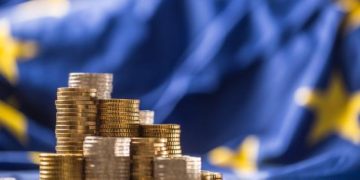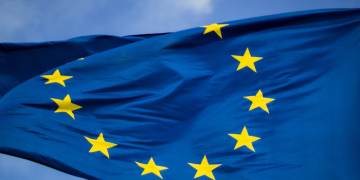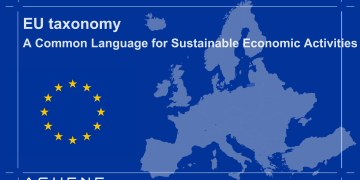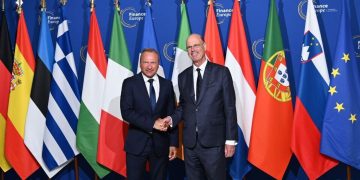Introduction
The global monetary system is entering a period of profound transformation. Long dominated by the U.S. dollar, international finance is now shaped by new geopolitical realities, regional economic blocs, technological disruptions, and shifting patterns of global trade. In this evolving landscape, Europe stands at a crossroads. Its currency, the euro, is deeply embedded in the global system, yet it is neither dominant nor peripheral. Its institutions are powerful but constrained; its markets are deep but fragmented; and its monetary strategies must balance internal cohesion with external competition.
As talk of “de-dollarization” grows louder, and as digital currencies—both private and state-backed—reshape payment networks, Europe must determine whether it intends to shape the future of global money or simply adapt to it.
This article analyzes the emerging global monetary landscape and positions Europe within it. It examines the forces driving diversification away from the dollar, explores Europe’s monetary alliances and its geopolitical positioning, evaluates the rise of digital currencies, and considers whether coordinated European monetary leadership could meaningfully influence the next international financial order.
1. De-Dollarization: Myth, Reality, and the European Dimension
1.1 Why de-dollarization is gaining attention
In the past few years, several factors have intensified discussions about reducing global reliance on the U.S. dollar:
- Geopolitical fragmentation
- U.S. sanctions and extraterritorial jurisdiction
- Rising fiscal vulnerabilities in the United States
- Emerging market frustration with dollar liquidity cycles
- The rise of alternative economic blocs
While the dollar remains overwhelmingly dominant—representing roughly 60% of global reserves and 80–90% of trade invoicing in certain sectors—the appetite for alternatives has grown.
1.2 Europe’s paradoxical position in de-dollarization
Europe benefits from the dollar-dominated system because:
- Transatlantic financial cooperation is deep
- European banks rely heavily on dollar funding
- Many global commodities are priced in dollars, supporting European hedging markets
Yet Europe also suffers from this dependence:
- Dollar liquidity crises (2008, 2020) destabilize European banks
- U.S. sanctions have unintended spillover effects on European firms
- Dollar fluctuations complicate monetary policy transmission
- Europe’s trade relationships are increasingly multipolar
Thus, Europe is both aligned with and trapped within the dollar system.
1.3 Can the euro benefit from diversification?
In theory, global diversification away from the dollar should increase demand for the euro.
In practice, Europe’s ability to capitalize on this shift faces obstacles:
- Fragmented fiscal governance
- Limited supply of safe euro-denominated assets
- Slow institutional decision-making
- Lower growth potential than the U.S.
Nevertheless, de-dollarization does create openings for the euro—especially in regions such as Africa, the Middle East, and parts of Asia that seek non-aligned monetary partners.
2. Europe’s Monetary Alliances and Regional Influence
2.1 The euro as a regional anchor currency
Outside Europe, the euro already serves as a de facto anchor in:
- The Western Balkans
- Central and Eastern Europe
- North Africa
- Parts of West Africa through the CFA franc zone
These regions peg or partially peg their currencies to the euro or rely heavily on it for trade invoicing and pricing.
2.2 The future of euro-centric monetary zones
Europe has opportunities to strengthen its regional influence, but only if it can provide:
- Stable access to euro liquidity
- Clearer frameworks for financial support
- More predictable monetary signaling
- Cooperation in digital payments
Recent EU initiatives—such as expanding cross-border payment interoperability and supporting local currency bond markets—demonstrate a growing recognition of Europe’s regional monetary role.
2.3 The EU’s geopolitical balancing act
Europe’s monetary alliances are shaped by geopolitics:
- Europe wants strategic autonomy from the U.S. but also relies on NATO
- It seeks economic ties with China, but security concerns limit integration
- It aims to build partnerships with the Global South, yet investment remains inconsistent
This balancing act constrains Europe’s ability to build a cohesive monetary sphere comparable to the dollar zone.
3. Digital Currencies and the New Global Monetary Competition
3.1 The rise of central bank digital currencies (CBDCs)
More than 130 countries are exploring CBDCs.
China has already launched the digital yuan; India is piloting a digital rupee; and dozens of African nations are experimenting with digital monetary systems.
Europe is entering this competition with the digital euro, which could:
- Reduce dependency on private payment networks
- Facilitate cross-border digital commerce
- Strengthen the euro’s international appeal
- Provide a secure alternative to volatile cryptocurrencies
3.2 The strategic risk of falling behind
If Europe fails to deliver an effective digital euro:
- Emerging markets may adopt other digital currency standards
- Payment networks could be dominated by U.S. tech companies or Chinese infrastructure
- The euro’s relevance in digital trade could decline
Europe has historically been slow to innovate in financial technology. The digital euro is an opportunity to break that pattern—but only if political and technical coordination succeeds.
3.3 Europe’s role in setting global digital standards
Where Europe does have advantages:
- Strong regulatory infrastructure
- GDPR-level privacy protections
- Experience setting global financial and data rules
- A massive integrated consumer market
This positions Europe to create global frameworks for digital currency interoperability, which could strengthen international trust in euro-denominated digital transactions.
4. Commodity Markets, Energy Transitions, and Monetary Power
4.1 The dollar’s dominance in commodity pricing
Most global commodities—oil, gas, metals—are priced in dollars. This gives the U.S. immense monetary power.
Europe’s import dependence makes it highly vulnerable to dollar fluctuations, especially during energy crises.
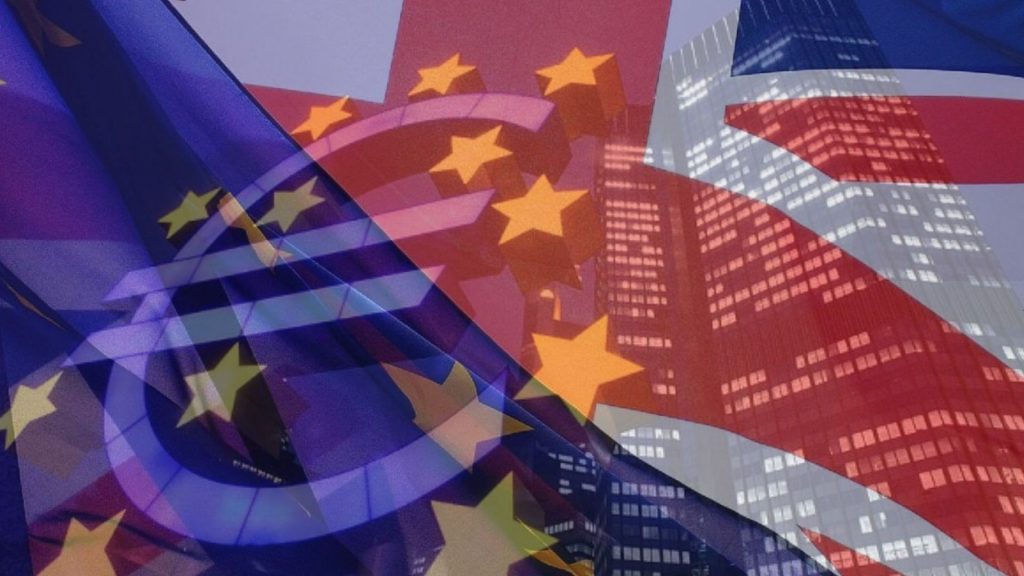
4.2 Europe’s energy transition as a monetary strategy
If Europe accelerates its decarbonization agenda, it could:
- Reduce exposure to dollar-priced fossil fuels
- Build leadership in green technology markets
- Strengthen euro-denominated green financing
The EU’s sustainable finance agenda—already the world’s largest—positions the euro as the primary currency for global ESG investments.
4.3 Could green commodities be priced in euros?
As demand for critical minerals (lithium, cobalt, nickel) grows, Europe may have opportunities to:
- Develop euro-denominated benchmarks
- Establish strategic partnerships with resource-rich regions
- Use green industrial policy to shape commodity pricing standards
This would enhance the euro’s strategic relevance in a low-carbon world.
5. Europe’s Structural Limitations in Shaping Global Monetary Order
Despite opportunities, Europe faces several major constraints.
5.1 Political fragmentation
Twenty-seven countries must coordinate on monetary, fiscal, and regulatory policy. This limits speed, coherence, and strategic clarity.
5.2 Lack of fiscal union
Without a unified European Treasury issuing large volumes of shared debt, the euro cannot match the dollar’s safe-asset ecosystem.
5.3 Demographic decline
Europe’s aging workforce limits its long-term growth potential, reducing investor appetite for euro-denominated assets.
5.4 Slow technological adoption
Europe lags behind the U.S. and Asia in key digital infrastructure sectors:
- Cloud computing
- AI development
- Fintech innovation
This erodes Europe’s competitiveness in the digital currency race.
6. Strategic Pathways for Europe in a Changing Monetary System
For Europe to meaningfully influence the global monetary future, several strategies are essential.
6.1 Deepening eurozone integration
Key steps include:
- Completing banking union
- Advancing capital markets union
- Expanding EU-level bond issuance
- Coordinating fiscal policy more effectively
These reforms would increase euro liquidity, strengthen financial stability, and make Europe more resilient.
6.2 Leadership in digital financial infrastructure
Europe can lead by focusing on:
- Digital euro interoperability
- Data privacy standards
- Secure cross-border payment systems
- Decentralized finance regulation
This would allow Europe to shape the rules of the next financial era.
6.3 Building stronger partnerships with the Global South
Europe can expand monetary influence by offering:
- Infrastructure financing
- Sustainable development partnerships
- Euro liquidity facilities
- Cooperation in digital payment systems
This approach contrasts with China’s state-driven model and the U.S. security-driven framework, giving Europe a unique niche.
6.4 Leveraging green finance as a geopolitical tool
The euro should become the default currency for:
- Carbon markets
- Sustainable bonds
- Green industrial projects
- Renewable energy investment flows
Europe is already a leader; it must institutionalize this advantage.
Conclusion: Europe at the Frontiers of a New Monetary Era
The world is moving toward a more fragmented, multipolar monetary system.
The dollar will remain dominant, but alternatives will grow.
Digital currencies will reshape how value moves.
Regional blocs will strengthen their monetary identities.
Commodity markets will be transformed by decarbonization.
In this future, Europe’s role is neither predetermined nor fixed.
The euro could grow into a pillar of a diversified global system—stable, rules-based, trusted.
Or Europe could fall behind more agile competitors, becoming a follower in a game defined by others.
The decisive factor will be Europe’s willingness to act with strategic unity, invest in digital innovation, and leverage its strengths in regulation, sustainable finance, and regional partnerships.
A new global monetary order is emerging.
Whether Europe shapes it—or adjusts to it—remains the central question of the coming decade.










